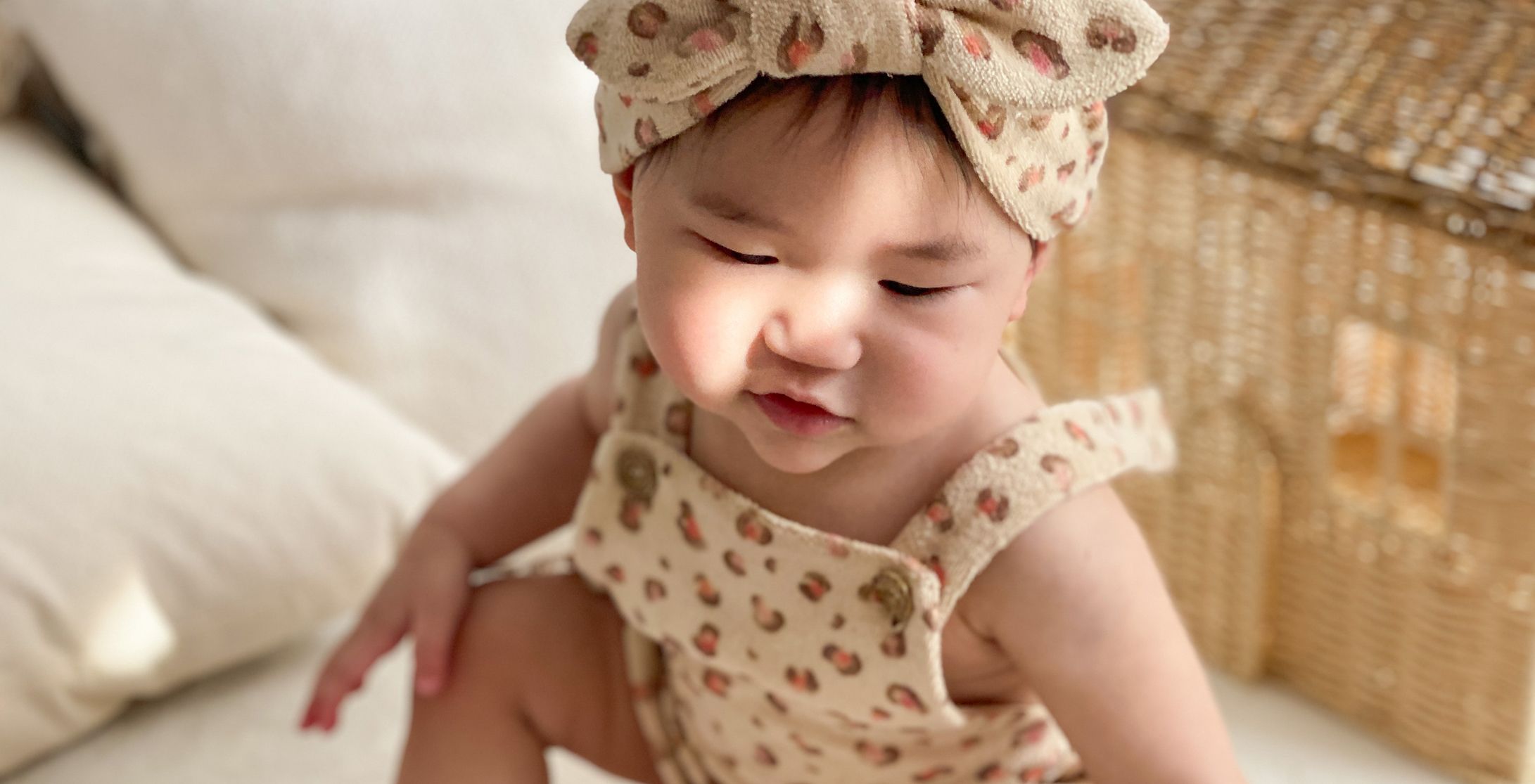
How to Dress Baby for Summer
6 min read | 9 October 2025
8 min read | 17 January 2021
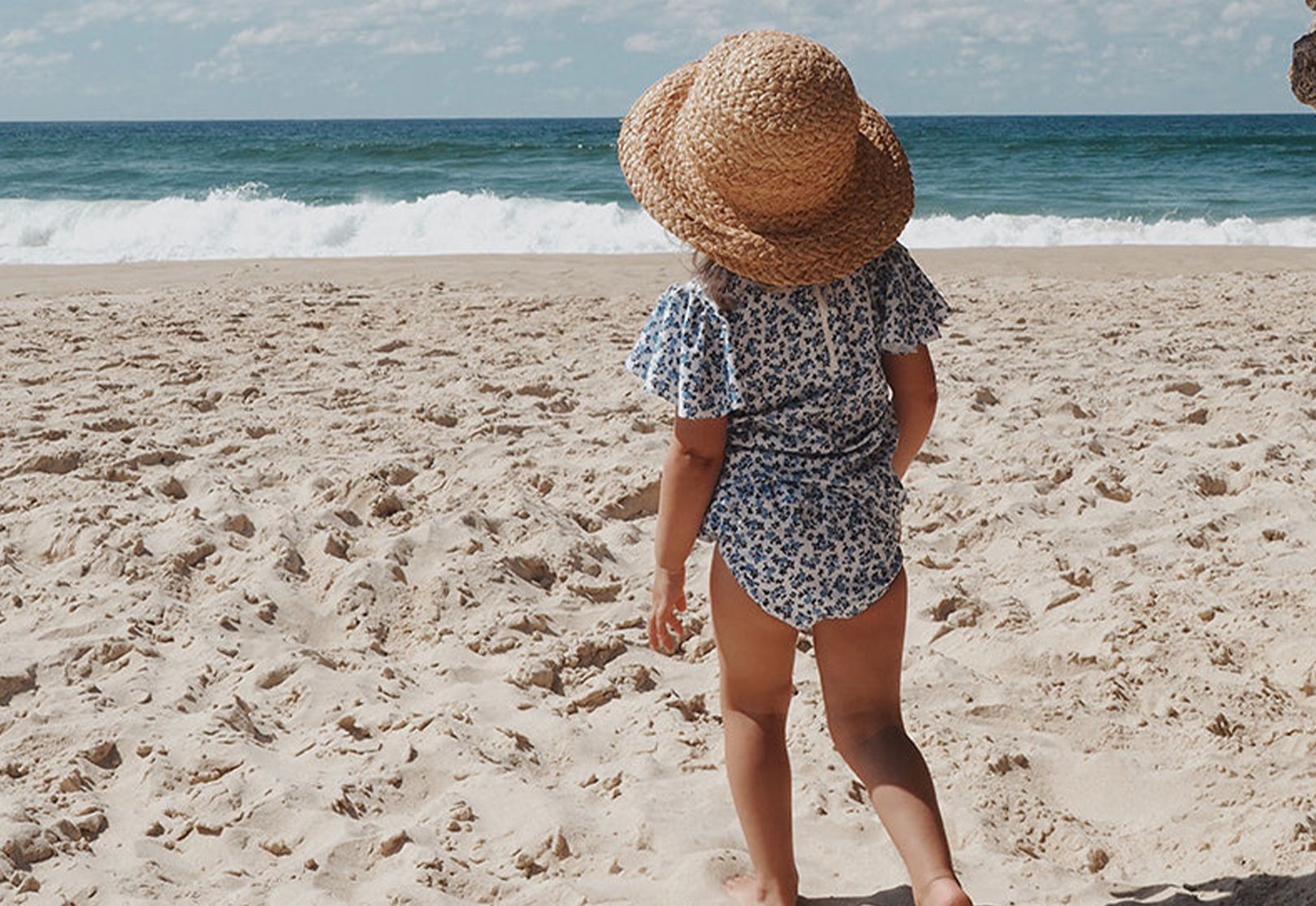
However, with just a little organisation and planning, your first beach day with your little one is bound to be a fun, memorable and stress-free occasion.
When selecting swimwear for your baby, it’s important to consider sun protection, comfort and durability. Baby skin, particularly that of babies under the age of 6 months, is very sensitive to the sand, heat, UV and even some sunscreens, so it’s important to find good quality baby swimwear that covers as much of your little one’s skin as possible.
Like adult swimwear, baby swimwear comes in a range of different one and two-piece styles. One-piece swimsuits are great for protecting your little one against harmful UV rays and keeping the sand out. At times they can be difficult to get on and off, so look for styles with front zips for easy changing. One-pieces styles can be found with different arm and leg lengths for varying levels of sun protection.
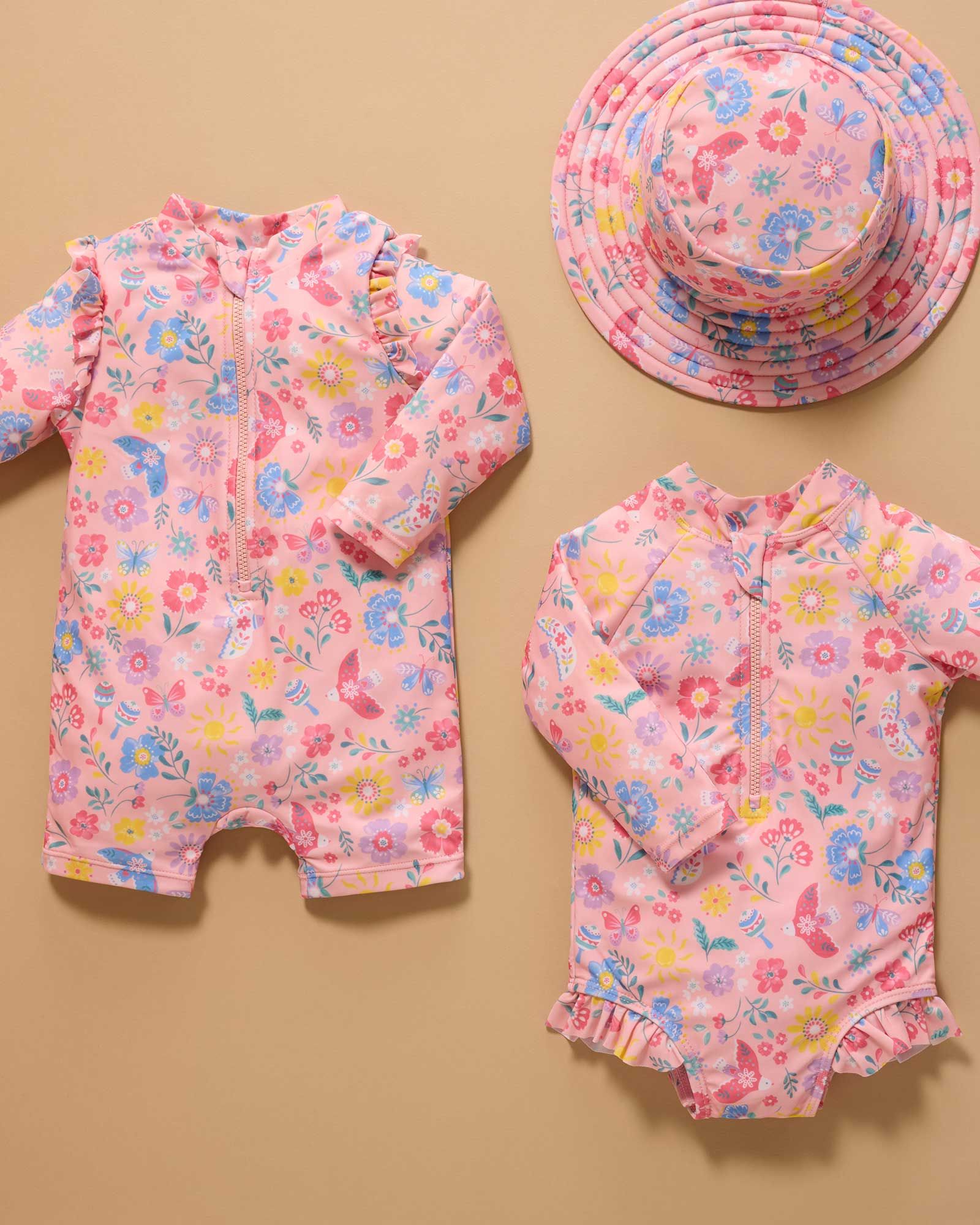
On the other hand, two-piece swimsuits are versatile and make change time at the beach a breeze. When shopping for two-piece styles, make sure the rashie top well and truly overlaps with the bather bottoms to avoid exposed skin.
Your baby’s swimwear should be made from a lightweight and breathable UPF 50+ fabric. If you’re planning to take your little one to the pool as well as the beach, look for chlorine resistant materials for added durability.
A broad-brimmed hat is a must for any day at the beach. Opt for a hat made from a moisture-wicking, high UPF fabric with an adjustable toggle that helps it to stay nice and secure on your little one’s head.
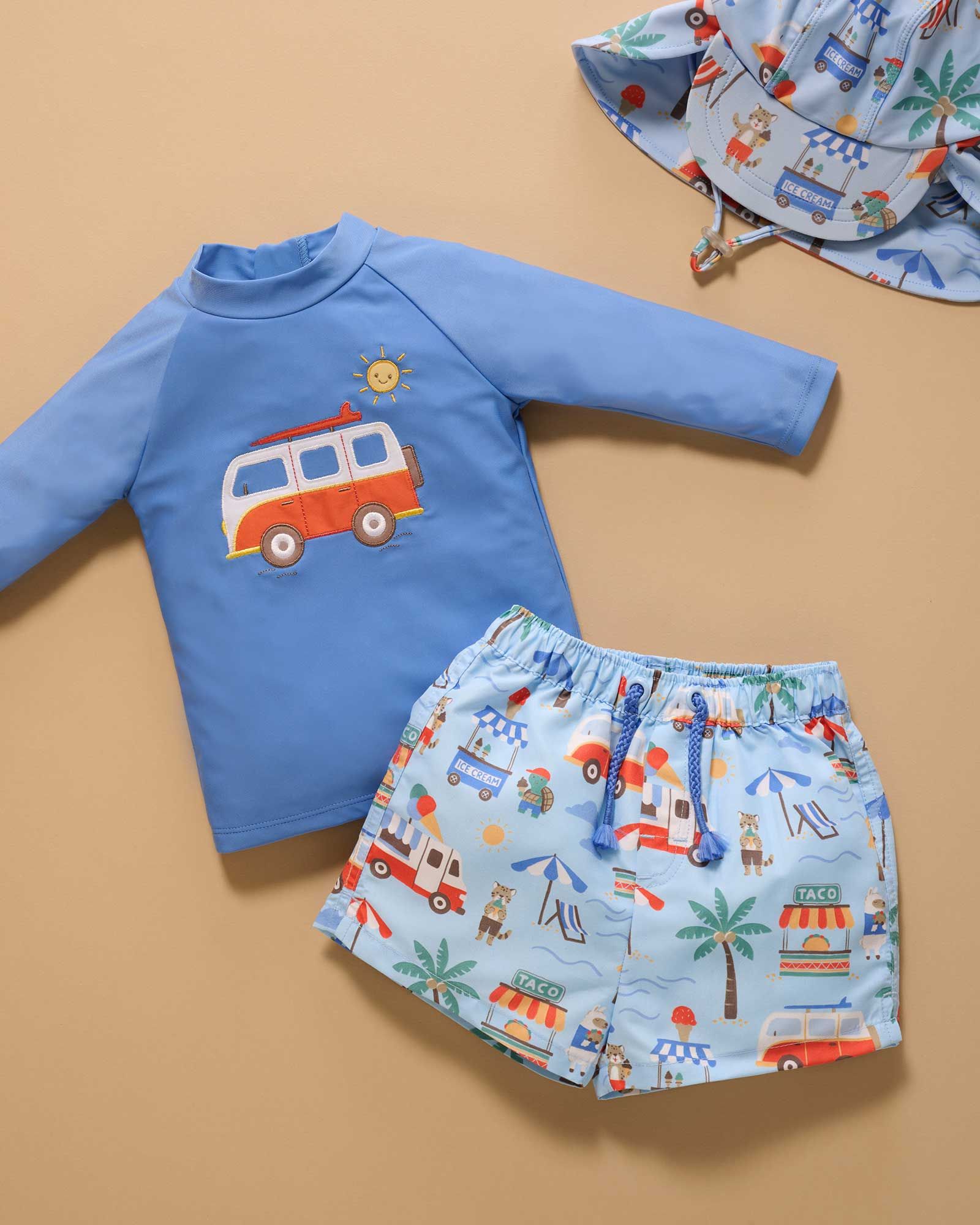
While you don’t need to pack a huge number of things for a day out at the beach, making sure you include the essentials will help make your day relaxing and worry-free.
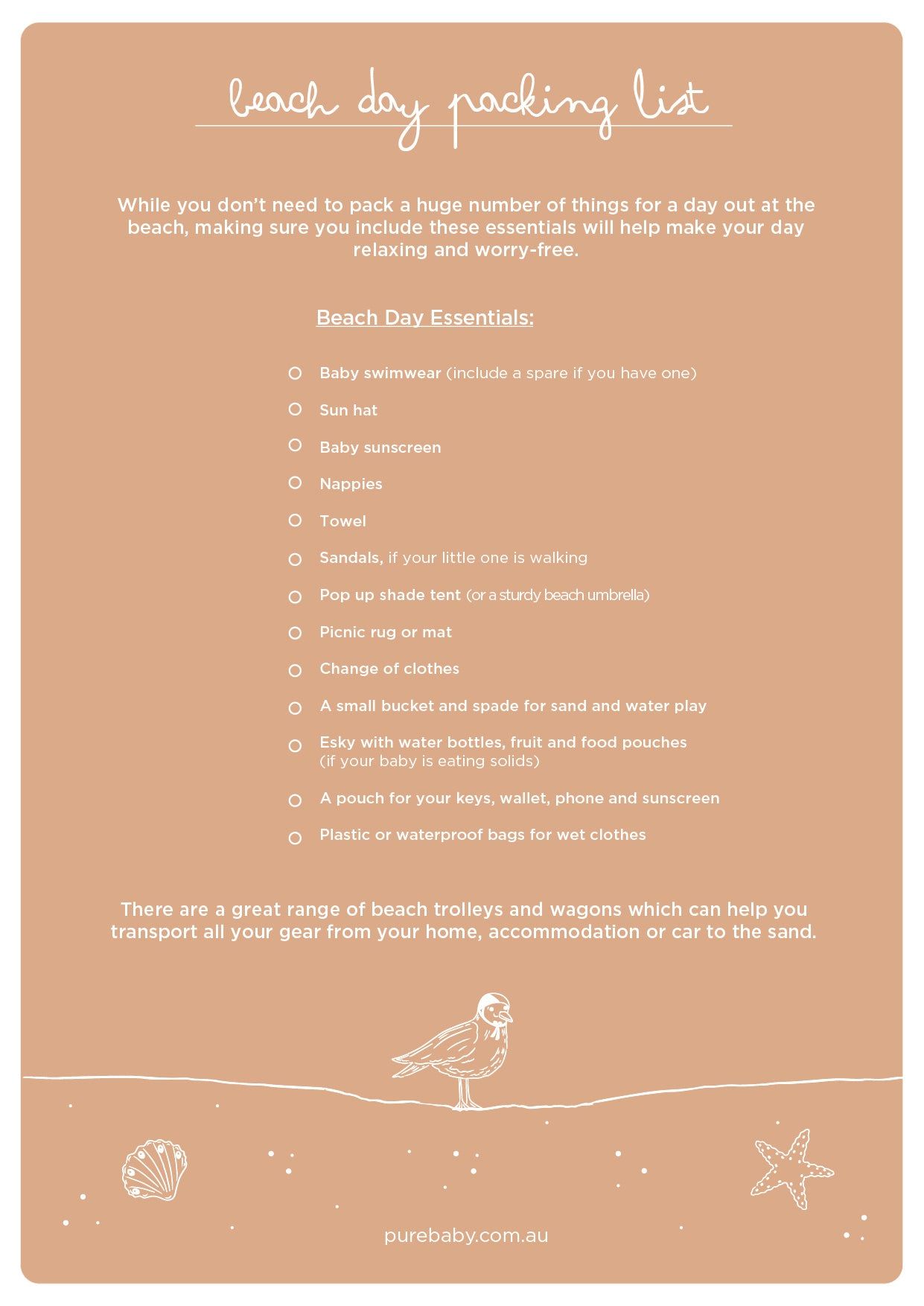
(include a spare if you have one)
Sun hat
Baby sunscreen
Nappies
Towel
Sandals, if your little one is walking (we love Salt Water sandals for their high quality and durability, especially around water)
Pop up shade tent (or a sturdy beach umbrella)
Picnic rug or mat
Change of clothes
A small bucket and spade for sand and water play
Esky with water bottles, fruit and food pouches (if your baby is eating solids)
A pouch for your keys, wallet, phone and sunscreen
Plastic or waterproof bags for wet clothes
There are a great range of beach trolleys and wagons which can help you transport all your gear from your home, accommodation or car to the sand.
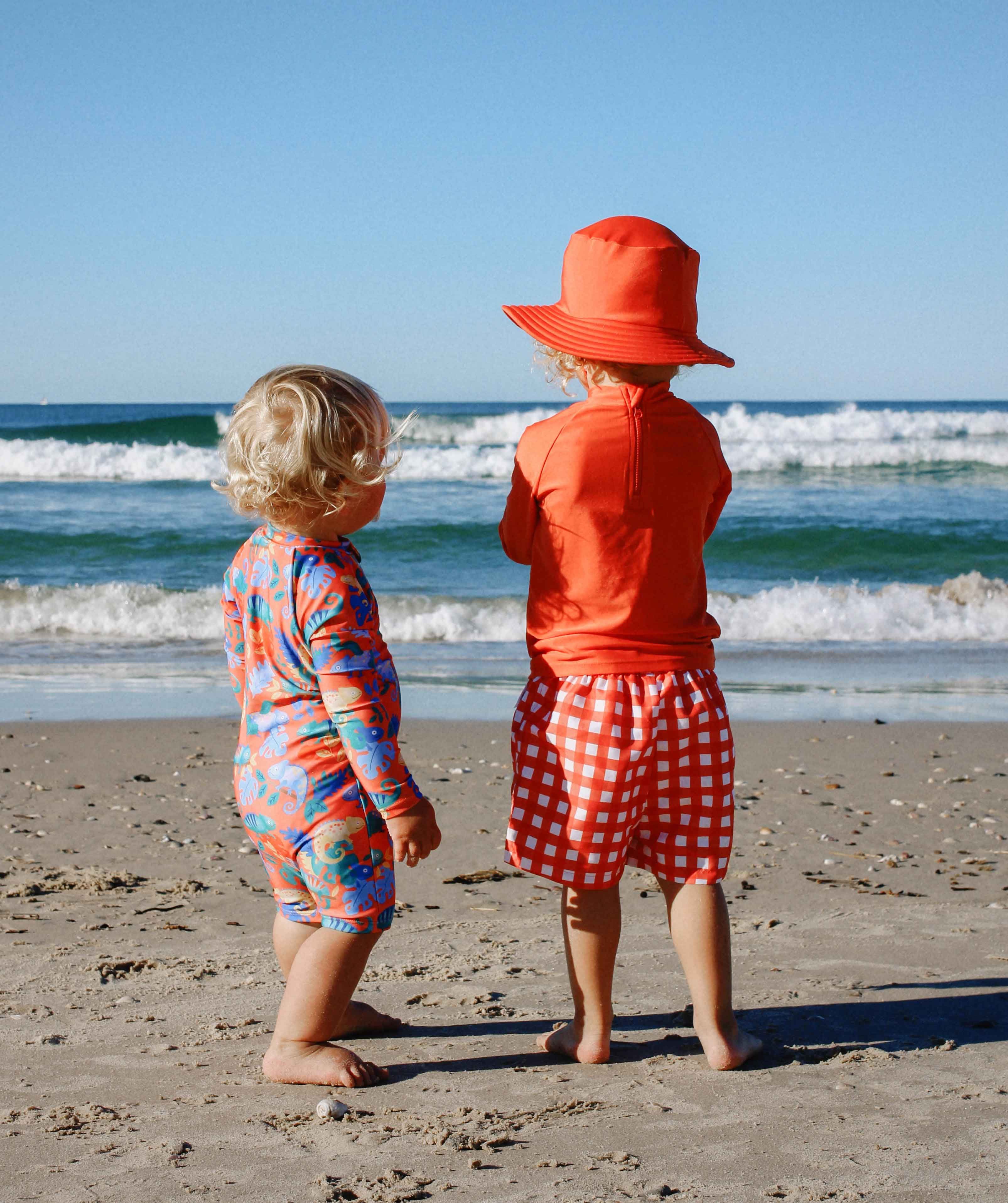
By getting organised and planning your day out in advance, you’re much more likely to have a fun and relaxing day by the water. Seek out a baby-friendly beach which has ample parking, amenities, shade and lifeguards, calm and clean water and ideally some nearby spots for food and shelter, just in case!
To keep your baby cool, it’s always a good idea to take your own shade protection to the beach. A pop-up shade tent or sturdy beach umbrella really comes in handy when your little one decides they want to spend hours making sandcastles in the hot sun. We also recommend taking a small esky filled with cold water and snacks.
Your baby’s skin is thin, extremely sensitive and can burn easily. When heading to the beach, it’s important to cover as much of their skin as possible by ensuring they wear sun-protective clothing at all times, applying SPF30 (or higher) broad-spectrum, water-resistant sunscreen, and protecting their face with a broad-brimmed hat. Apply sunscreen to your little one’s skin at least 20 minutes before going out into the sun and reapply it every two hours or after contact with water. If your baby is less than 6 months, look for sunscreen marked ‘for babies’ or ‘sensitive’, as they’re less likely to cause skin irritation. Always test the sunscreen on a small area of your baby’s skin to check for any reactions.
While there’s always a temptation to pack lots of toys to keep your little ones entertained, their favourite toys may get lost or damaged at the beach. The sand, shells and water at the beach will keep them amused for hours – just give them a little plastic bucket and spade and watch them play!
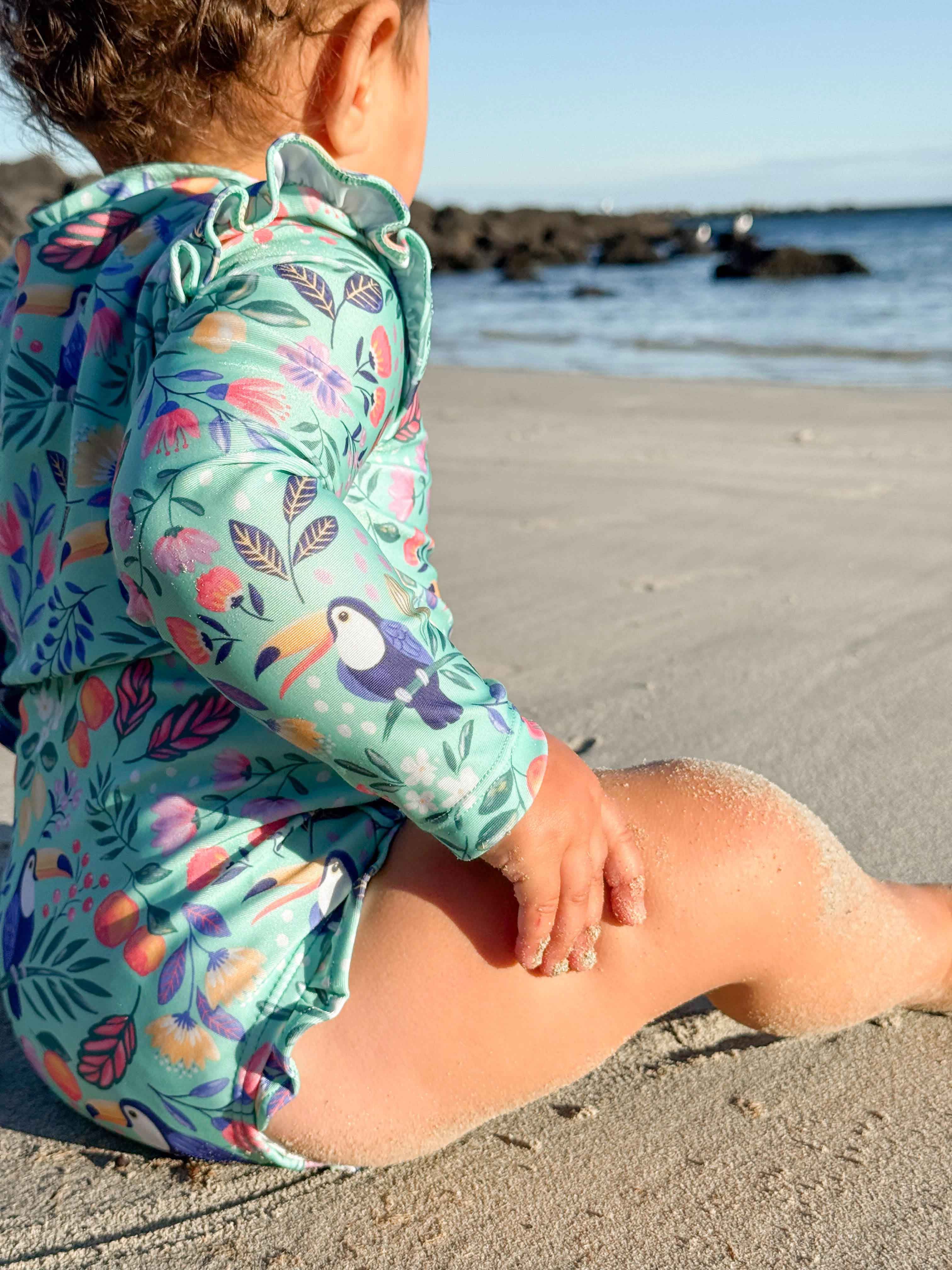
When heading to the beach with your little one for the first time, try to visit a quiet beach near your home or accommodation for a short period of time. While you’re there, walk with them into the shallow water, where the water meets the sand, and get their feet and legs used to the sensation of the sand and water.
The UV is strongest in the middle of the day, between 10 and 4pm. If possible, try to visit the beach outside these times (taking nap times into account of course!). The Sun Smart app is a great way to track the UV levels and understand when sun protection is recommended at your location.
Shop our range of baby and toddler swimwear, made from UPF50+ fabric, is chlorine-resistant, and is made from recycled bottles and other landfill. Shop Purebaby Swim now.
Sign up to Pure Love Rewards and get $10 off your first online order, earn points every time you shop and more!